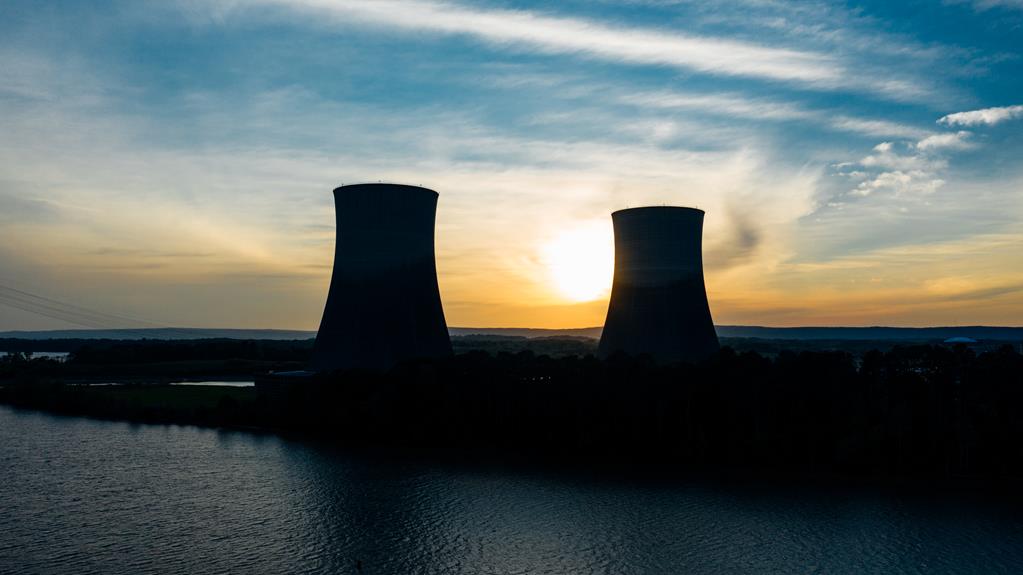Kidney Cancer Due to AFFF
Kidney cancer, a serious malignancy affecting renal tissue, has been increasingly associated with exposure to certain per- and polyfluoroalkyl substances (PFAS), which are components of aqueous film-forming foam (AFFF) used in firefighting. Studies indicate that the unique chemical properties of PFAS, which include resistance to heat and water, also render them environmentally persistent and bioaccumulative.

Consequently, individuals with occupational exposure to AFFF, such as firefighters and military personnel, are at a heightened risk of developing kidney cancer. This association has prompted a reevaluation of the health risks posed by PFAS exposure and has instigated discussions concerning the need for stringent regulatory measures to protect susceptible groups from the carcinogenic effects of these chemicals.
Key Takeaways
- PFOS and PFOA, chemicals from the PFAS group, have a strong association with kidney cancer.
- Firefighters and military personnel, as well as their families, are at high risk of exposure to PFOS and PFOA due to their occupation or proximity to contaminated sites.
- Exposure to PFOS and PFOA increases the risk of developing kidney cancer by 50%.
- Firefighters and veterans who developed kidney cancer as a result of exposure to PFOS and PFOA may be entitled to financial compensation.
Understanding PFAS Chemicals

Within the context of AFFF, it is important to comprehend the properties and impacts of per- and poly-fluoroalkyl substances (PFAS), particularly given their established link to kidney cancer. The rigorous scrutiny of PFAS chemical regulations is grounded in their toxicity, mobility, and bioaccumulative characteristics, which pose significant threats to human health.
The health effects of PFAS exposure, notably from prolonged contact with PFOS and PFOA, are substantiated by a 50% increased risk of developing kidney cancer. These findings are supported by authoritative bodies such as the U.S. Environmental Protection Agency, which has identified the carcinogenic potential of PFOA, and the International Agency for Research on Cancer, which has classified PFOA as a possible carcinogen.
PFOS: A Cancerous Concern
Amid growing concerns, evidence has increasingly linked PFOS, a perfluorobutane sulfonic acid from the PFAS family, to the development of kidney cancer. This correlation is particularly alarming for individuals with occupational exposure where PFOS-containing aqueous film-forming foam (AFFF) is used extensively.
- PFOS and firefighting activities have been connected, with PFOS being a primary ingredient in AFFF, leading to elevated cancer risks among firefighters.
- Military personnel and PFAS exposure intersect significantly due to the use of AFFF in military fire suppression, potentially increasing kidney cancer incidences among service members.
- The persistence and bioaccumulative nature of PFOS heighten the concern for long-term health impacts, including cancer, underscoring the need for strict regulatory measures and health monitoring protocols.
PFOA’s Carcinogenic Evidence
Investigating PFOA's role in carcinogenesis, studies have identified its potential to significantly increase the risk of kidney cancer. The International Agency for Research on Cancer has classified PFOA as a possible human carcinogen, emphasizing concerns about its presence in AFFF used by firefighters.
Accumulating evidence highlights PFOA's carcinogenic effects, indicating a 50% heightened risk for kidney cancer associated with PFOA and PFOS exposure. These findings carry legal implications for firefighters, who may have elevated PFOA levels due to occupational exposure. Consequently, there is a growing recognition of the need for protective measures and the potential for affected individuals to seek compensation through environmental litigation.
Toxicity of PFAS Substances

Concerning the toxicity of PFAS substances, their persistent nature and ability to accumulate in the human body pose significant health risks, including the development of kidney cancer. The insidious characteristics of these substances manifest in various PFAS toxicity effects and PFAS bioaccumulation risks:
- Persistent environmental presence: PFAS compounds resist degradation, leading to prolonged exposure and increased potential for harm.
- Bioaccumulative properties: PFAS readily accumulate in living organisms, amplifying toxicity over time and potentially disrupting endocrine functions.
- Diverse health implications: Exposure to PFAS is associated with multiple adverse health outcomes, including immunotoxicity, reproductive toxicity, and carcinogenicity, particularly concerning kidney cancer.
Human Health Implications

While PFAS chemicals such as PFOS and PFOA have been linked to environmental and biological persistence, their implications for human health are particularly alarming, with increased instances of kidney cancer observed in populations with significant exposure. The toxicity, mobility, and bioaccumulation potential of these substances contribute to their destructive influence on both human physiology and the broader ecosystem.
Evidence suggests a 50% escalation in kidney cancer risk associated with PFAS exposure. This necessitates the implementation of potential prevention strategies, focusing on minimizing occupational and environmental contact with these contaminants. Interventions range from improved protective measures for at-risk workers to stringent regulations limiting PFAS discharge into the environment, thereby mitigating their impact and safeguarding public health.
Linking PFAS to Kidney Cancer
How do PFAS chemicals, such as PFOS and PFOA, contribute to the development of kidney cancer in individuals exposed to aqueous film-forming foam? Persistent exposure to these substances has been identified as a considerable health risk. The strong tie between PFAS exposure and kidney cancer is built upon several biological mechanisms:
- PFAS compounds disrupt endocrine function and modulate hormonal pathways, which can lead to cellular dysregulation and cancerous growth in the kidneys.
- They induce oxidative stress and inflammation, damaging renal cells, and DNA, thereby increasing the risk of mutations and malignancy.
- PFAS accumulate in kidney tissue due to their high persistence in the body, exacerbating toxic effects over time.
Kidney Function and PFAS

Exposure to per- and polyfluoroalkyl substances (PFAS) has been implicated in the disruption of normal kidney function, potentially leading to renal disease and increased risk of kidney cancer.
Ongoing research highlights the clinical significance of monitoring PFAS exposure, particularly due to its association with altered renal function and kidney disease. Elevated PFAS and uric acid levels in individuals can serve as biomarkers for assessing the risk and progression of kidney-related ailments.
| PFAS Impact | Kidney Function | Clinical Correlation |
|---|---|---|
| Disruption | Renal disease | PFAS and kidney disease |
| Biomarker levels | Uric acid | PFAS and uric acid levels |
| Epidemiological | Cancer risk | PFAS exposure assessment |
| Biological pathway | Functional change | Renal toxicity mechanism |
This table encapsulates the critical connections between PFAS exposure and kidney health outcomes, emphasizing the need for evidence-based approaches to assess and mitigate the health risks associated with these chemicals.
EPA’s Carcinogen Classification
The U.S. Environmental Protection Agency classifies certain PFAS compounds, including PFOA, as having substantial evidence of carcinogenic potential, particularly concerning kidney cancer. This classification is based on a comprehensive evaluation of scientific studies demonstrating the health implications associated with exposure to these substances. The EPA's classification informs regulatory actions and public health recommendations.
- EPA's classification underscores the potential for PFAS to act as a human carcinogen, necessitating stringent controls.
- Investigations into the health implications of PFAS exposure have consistently shown an elevated risk of kidney cancer.
- Regulatory measures are informed by the EPA's designation, leading to the development of guidelines to reduce human exposure to these harmful contaminants.
Renal Risks From PFAS

Perfluoroalkyl substances (PFAS), including PFOS and PFOA, have been implicated in increased renal risks, particularly concerning the development of kidney cancer. The PFAS toxicity profile is troubling, given their environmental persistence, potential for bioaccumulation, and mobility within ecosystems.
Evidence-based research has established a connection between PFAS exposure and renal disease, noting alterations in kidney function and uric acid levels. Epidemiological studies have reinforced the link, showing a significant uptick in kidney cancer incidence among populations with higher PFAS blood serum levels.
Furthermore, regulatory agencies have acknowledged the carcinogenic potential of these substances, with PFOA classified as a possible human carcinogen, underscoring the urgency in addressing PFAS exposure to mitigate renal health risks.
IARC’s PFOA Classification
Recognizing the potential risks, the International Agency for Research on Cancer has classified PFOA as a possible human carcinogen, specifically noting its link to kidney cancer. This classification is grounded in an evidence-based approach, reflecting the substantiated concerns regarding PFOA's environmental impact, which encompasses widespread contamination and persistent bioaccumulation.
- PFOA's classification is based on epidemiological studies demonstrating a higher incidence of kidney cancer among individuals with elevated levels of exposure.
- PFOA's environmental impact includes long-term persistence, resistance to degradation, and bioaccumulation in wildlife and humans.
- PFAS exposure in water sources is a significant concern, as these chemicals can leach into groundwater, affecting drinking water supplies and posing health risks to exposed populations.
Firefighters’ PFAS Exposure

Firefighters, due to their occupation, face an elevated risk of PFAS exposure through contact with aqueous film-forming foam (AFFF), which has been linked to an increased incidence of kidney cancer. The health risks of AFFF exposure arise from the bioaccumulative and toxic properties of PFAS chemicals, which include PFOA and PFOS. These substances have been associated with various cancers, immune system effects, and endocrine disruption.
The following table summarizes key points regarding PFAS exposure in firefighters:
| Aspect | Detail | Relevance to Firefighters |
|---|---|---|
| Exposure | Frequent contact with AFFF | Direct risk factor |
| Health Risks | Increased incidence of cancers | Kidney cancer association |
| PFAS Levels | Higher in firefighters' blood | Occupational hazard |
Evidence-based research underscores the imperative for preventive measures and health monitoring in this high-risk group.
Elevated AFFF Health Risks
Aqueous film-forming foams (AFFF), commonly used in firefighting, have been identified as a significant contributor to the elevated health risks of kidney cancer due to the presence of perfluoroalkyl substances (PFAS). These substances are persistent environmental pollutants with established health implications. In the context of elevated AFFF exposure, the following points underscore the gravity of health risks:
- Bioaccumulative Nature: PFAS accumulates in the human body, leading to potential chronic health effects, including kidney cancer.
- Occupational Exposure: Firefighters and military personnel face higher concentrations of PFAS, thus increasing their risk of developing kidney cancer.
- Regulatory Scrutiny: Continuous research prompts stricter regulations and guidelines to mitigate exposure and address the associated health risks.
Given the specialized nature of this knowledge, continuous monitoring and updated safety protocols are imperative to protect vulnerable populations.
Military Exposure to PFAS

Numerous military installations have been identified as sites of significant PFAS contamination, leading to elevated exposure risks for service members and their families. The pervasive presence of PFAS, particularly PFOA and PFOS, at these sites has been a focus of concern due to the established military health effects stemming from such exposure.
Investigations into the degree of PFAS contamination in military sites have revealed concentrations exceeding environmental safety thresholds, raising alarms about long-term health implications. As a result, there has been an intensified call for rigorous epidemiological studies to further elucidate the relationship between PFAS exposure and incidences of renal pathologies, including kidney cancer, among military personnel. The implications are grave, warranting immediate and decisive actions to mitigate exposure and safeguard the health of service members.
Legal Rights for Firefighters

Addressing the legal entitlements of firefighters, it is critical to recognize that those who have been exposed to AFFF containing PFOS and PFOA may have grounds for compensation due to the associated risk of developing kidney cancer. Firefighter compensation is a complex legal matter that necessitates specialized knowledge and evidence-based guidance. Firefighters who have developed health issues linked to AFFF exposure should seek legal assistance to understand their options and rights.
- Eligibility for compensation depends on the extent of PFAS exposure and medical diagnosis evidencing kidney cancer.
- Legal claims may involve workers' compensation, personal injury lawsuits, or participation in class-action suits.
- Firefighters may be entitled to compensation for medical expenses, lost wages, and suffering associated with AFFF-related illnesses.
Seeking Compensation Assistance
For individuals affected by kidney cancer due to AFFF exposure, pursuing compensation through legal avenues is a critical step toward receiving rightful benefits. The PFAS compensation process is anchored in specialized legal frameworks designed to address the complex nature of exposure-related claims. Legal options for firefighters, including both civilian and military personnel, necessitate a comprehensive understanding of the toxicological impact of PFAS and the associated epidemiological evidence linking these substances to renal carcinogenesis.
Expert legal teams adept in environmental litigation can guide through the intricacies of such claims, ensuring that the evidence-based causal nexus between AFFF exposure and kidney cancer is meticulously established. This specialized knowledge is vital in navigating the compensation process successfully and securing the deserved reparations for affected individuals.
Frequently Asked Questions
How Does the Method of PFAS Exposure, Such as Ingestion Vs. Inhalation, Affect the Risk of Developing Kidney Cancer?
The method of PFAS exposure, whether through ingestion or inhalation, significantly influences the risk and severity of kidney cancer. PFAS biomonitoring reveals that ingestion typically leads to higher bodily accumulation, heightening cancer risk. Exposure pathways, including contaminated water or air, determine how PFAS enter the body, affecting disease outcomes. Clinical expertise emphasizes that evidence-based research is crucial to understanding these specialized knowledge areas and their implications on human health.
Are There Any Dietary or Lifestyle Changes That Individuals With High PFAS Blood Levels Can Adopt to Mitigate the Risk of Kidney Cancer?
Individuals with elevated PFAS blood levels may consider dietary and lifestyle modifications to reduce potential health risks. Implementing strategies for PFAS detoxification, such as increased water intake and consumption of foods high in antioxidants, might mitigate the effects.
Antioxidant intake, through fruits and vegetables, can help combat oxidative stress associated with toxin exposure. However, these methods should be complemented by clinical guidance for personalized health strategies.
What Are the Latest Developments in Medical Research for Detecting Early Signs of Kidney Cancer in Populations With High PFAS Exposure?
Like a lighthouse unveiling the obscured, recent advances in medical research focus on biomarker identification to detect early signs of kidney cancer. This approach leverages sophisticated techniques to isolate genetic markers, which may illuminate individuals' genetic susceptibility to the disease.
Grounded in clinical expertise, these evidence-based strategies represent specialized knowledge aiming to provide a preemptive strike against the latent threat of cancer in populations with high PFAS exposure.
Can the Natural Degradation Process of PFAS in the Environment Eventually Eliminate the Risk of Exposure, or Do These Chemicals Persist Indefinitely?
The natural degradation process of PFAS is notably slow, rendering these chemicals persistent in the environment. Remediation techniques to accelerate biodegradation efficiency are under investigation, but current evidence suggests that PFAS compounds resist natural breakdown processes, often remaining intact for extended periods.
Consequently, without active intervention and advanced remediation strategies, the risk of exposure to PFAS cannot be effectively eliminated by natural environmental processes alone.
How Do International Regulations Compare With U.S. Standards in Managing PFAS Contamination and Preventing Occupational Exposure, Such as in the Case of Firefighters and Military Personnel?
International regulations on PFAS contamination and occupational exposure vary significantly, particularly concerning firefighting foam on military bases. While the European Union has implemented stringent restrictions and aims for a near-total phaseout of PFAS, U.S. standards are evolving, with increased scrutiny and regulatory measures being considered.
Expert analysis indicates a need for coordinated, evidence-based policies to mitigate exposure risks associated with these persistent environmental pollutants.




